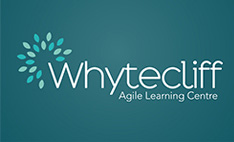Visual perceptual/visual motor deficits affect a child’s ability to understand the information they visually see. This impacts a child’s ability to read and affects their ability to draw or copy and often leads to a short attention span. Such difficulties are often seen in children with dysgraphia and nonverbal learning disorders and children with specific visual impairments.
How Whytecliff Can Help Kids With Visual Perceptual/Visual Motor Deficits
Whytecliff offers the BC Ministry of Education accredited curriculum leading to a British Columbia Certificate of Graduation. Whytecliff also incorporates the new BC Curriculum’s intellectual, personal, and social-emotional proficiencies, with a special emphasis on youth development as well as positive mental health and wellness.
Learning specialists recommend a two-pronged approach for helping students with Visual Perceptual/Visual Motor Deficits ⎯ reducing challenges and increasing skills. Compensation techniques (reducing challenges) are ways to reduce the negative impact on learning and bypass the problem. Remediation techniques (increasing skills) provide additional structured practice or re-teaching of a particular concept, idea, or skill. There is also newer science that suggests that techniques that utilize perceptual training may be effective as they are able to utilize the brain’s capacity for neuroplasticity and build new neural circuits.
At Whytecliff our self-directed and self-paced learning approach (concentrating on one or two courses at a time) allows children to proceed in accordance to their particular skills and challenges they face. With our low student to staff ratio of 5 or 6 to 1, children are able to receive the emotional and practical support they need. Our staff are able to modify assignments and projects to avoid grading handwriting, allow students to dictate work, provide alternatives to written assignments using whatever the medium a child is comfortable with, provide computers and online auditory learning experiences, and sequence work to the child’s capacity for attention.
We also are able to use innovative methods that encourage neuroplasticity through experiences of deep learning. For example, multi-sensory learning experiences using resources in the community, or using off–the–shelf video games or games specifically designed involving the detection of low contrast stimuli.
As a member of the Whytecliff “therapeutic community” children are also supported by their peers; working in pairs or groups each child is able to use their particular strengths to teach and learn from each other. Students may also be able to dictate words to and work with a specific friend.
